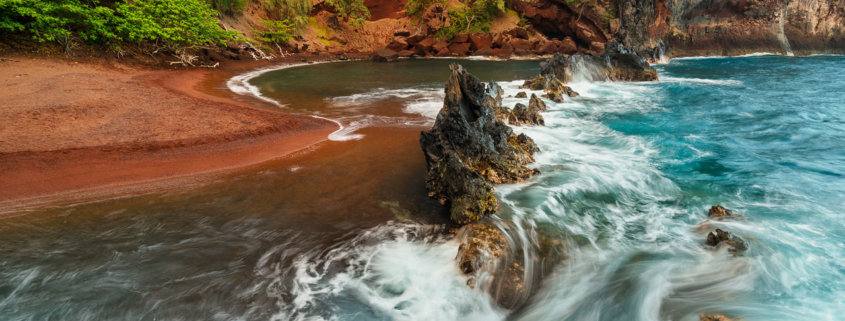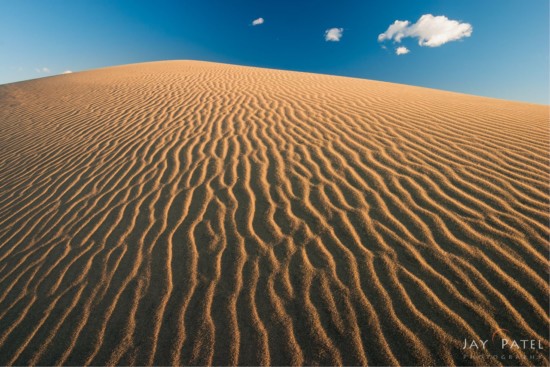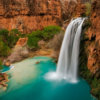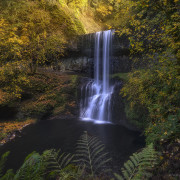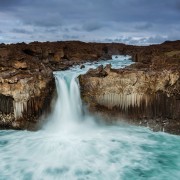Understanding Circular Polarizers in Nature Photography
A circular polarizer is arguably the most useful photography filter you can own and the most important must-have tool for instantly improving images while out in the field. Unlike other filters, the effects of a polarizer cannot be replicated in post-processing, making it a must-have accessory for capturing vivid and dynamic photographs. Aside from providing protection for the front lens element, a polarizer can transform an otherwise lifeless scene into an image with richness, saturation, contrast, and depth.
What is a Circular Polarizer and How Does It Work?
A circular polarizer is a filter composed of two rotating elements that attach to the front of a camera lens. It functions by blocking certain light waves from entering the lens, specifically those that cause glare and reflections. By rotating the outer ring of the filter, photographers can control the amount of polarized light that passes through, thereby enhancing or reducing specific visual effects in their images.
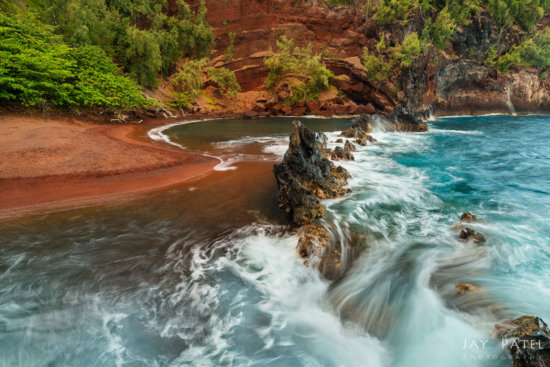
Captured using a circular polarizer to reduce glare on the water at Red Sand Beach, Maui, Hawaii by Jay Patel
Benefits of Using a Circular Polarizer
Whether you’re photographing a crystal-clear lake, a lush forest, or a dramatic mountain landscape, this filter helps capture the scene with true-to-life vibrancy. Here are a few key reasons to include a circular polarizer in your nature photography kit:
Reduction of Glare and Reflections
One of the primary advantages of a circular polarizer is its ability to minimize glare from non-metallic surfaces such as water, leaves, and glass. For instance, when photographing a forest scene after rainfall, wet leaves can produce unwanted reflections that obscure details. By using a polarizer, these reflections are diminished, revealing the natural textures and colors of the foliage.
- Reduction of Atmospheric Haze
Atmospheric haze can soften images and reduce clarity, especially in distant landscapes. A polarizer helps cut through this haze, resulting in sharper and more detailed photographs. For instance, when photographing a distant mountain range, using a polarizer can reduce the haziness, bringing out the details of the peaks. Enhanced Color Saturation
Circular polarizers can intensify colors by reducing the scattering of light. This is particularly noticeable in landscape photography, where the filter can deepen the blue of the sky and enrich the greens of vegetation. For example, when capturing a mountain landscape under a clear sky, a polarizer can make the sky appear a richer blue, providing a striking contrast against the mountains.
Intensifying Rainbows with a Circular Polarizer
Under the right conditions, a circular polarizer can enhance the colors of a rainbow, making them appear more vivid and striking. By selectively filtering polarized light, the polarizer amplifies the contrast between the rainbow and the surrounding sky, deepening its hues and making each color band stand out more distinctly.
In above example, I used a circular polarizer at Niagara Falls in New York to capture a brilliantly intense rainbow. As I looked through the viewfinder, I slowly rotated the polarizer until the colors reached their maximum vibrancy. The difference was astonishing—the muted, faint rainbow suddenly transformed into a bold, eye-catching spectrum against the misty backdrop of the falls. This technique works particularly well when the sun is at the right angle, typically behind you, illuminating the mist or rain that creates the rainbow. So, next time you spot a rainbow while out in nature, try using a circular polarizer and adjusting its rotation to see the magic unfold!
Improved Contrast
By filtering out polarized light, circular polarizers enhance the contrast between the sky and clouds, making cloud formations stand out more prominently. This effect adds depth and drama to landscape images, creating a more dynamic composition.
If you want to see the power of a circular polarizer in action, check out this video demonstration that showcases its ability to reduce glare and enhance colors in real time. The video compares scenes with and without a polarizer, highlighting how it eliminates reflections from water surfaces, deepens the blue of the sky, and enhances the richness of foliage. Watching the side-by-side comparisons makes it clear why a circular polarizer is an essential tool for nature photographers. Whether you’re photographing a crystal-clear lake, a lush forest, or a dramatic mountain landscape, this filter helps capture the scene with true-to-life vibrancy.
Drawbacks of Using a Circular Polarizer
While a circular polarizer is an indispensable tool for nature photographers, it does come with some limitations. Here are a few to keep in mind:
Light Loss
A significant consideration when using a circular polarizer is the reduction of light entering the lens, typically by about one to two stops. This necessitates compensatory adjustments to exposure settings, such as using a slower shutter speed, a wider aperture, or a higher ISO. In low-light conditions, this light loss can be challenging to manage without introducing noise or motion blur.
Uneven Polarization with Wide-Angle Lenses
When using wide-angle lenses, especially in landscape photography, polarizers can cause uneven polarization, resulting in noticeable variations in the sky’s tone, often referred to as the “blue blob” effect. This occurs because the angle of polarization changes across the wide field of view, leading to inconsistent results.
Difficulty in Autofocusing
In some situations, particularly in low-light conditions or when using certain camera systems, a circular polarizer can interfere with a camera’s autofocus capabilities. The reduction in light and the alteration of light paths can cause the autofocus system to hunt or fail to lock onto the subject accurately.
Cost
High-quality circular polarizers can be relatively expensive, especially for larger diameter lenses. Investing in a good polarizer is crucial, as lower-quality filters can degrade image quality, introducing unwanted color casts or reducing sharpness.
Conclusion
Incorporating a circular polarizer into your nature photography toolkit can significantly enhance image quality by reducing glare, enriching colors, and improving contrast. However, it’s essential to be mindful of its limitations, such as light loss and potential issues with wide-angle lenses. Understanding when and how to use a polarizer effectively will enable you to capture more compelling and visually striking photographs.
Essential Photography Filters Tutorial
This is exactly the kind of information you will find in our Essential Photography Filters course. We start with an in-depth discussion of the different filters that we carry. We explain why we carry them, how they work, and the problems that you might encounter in the field. We’ve included lots of examples for using each type of filter… and we don’t stop there. We follow up with a variety of real-world case studies so you can see and understand the thought-process behind our on-location workflow. You’ll see the effect of each filter on the backs of our cameras and you’ll learn as we explain our camera settings and choices in the field.
Looking to elevate your photography with the best filters for landscape and nature photography? Our Essential Photography Filters tutorial provides a comprehensive guide to must-have camera filters, helping you understand how to use them effectively for better exposure, color enhancement, and creative effects.
We begin with an in-depth breakdown of essential photography filters, explaining why professional photographers rely on them, how they work, and potential challenges you might face in the field. From polarizing filters for reducing glare to ND filters for long exposures, we cover it all.
But we don’t stop at theory—our course includes real-world case studies that demonstrate filter techniques in action. You’ll see before-and-after effects directly from our cameras, follow along as we discuss camera settings and workflow, and gain insights into how filters enhance images in various lighting conditions.
Whether you’re a beginner photographer looking to understand camera filters or an experienced shooter wanting to refine your technique, this tutorial will help you take your images to the next level.

